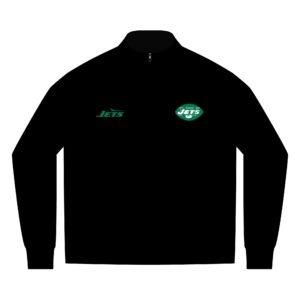New Jersey, a state often celebrated for its diverse landscapes, from sweeping coastlines to dense forests and bustling urban centers, harbors a hidden gem for nature enthusiasts: an incredibly rich and varied avian population. For those who pause to look skyward or gaze into the marshlands, the Garden State reveals itself as a vibrant sanctuary for countless bird species, making it an absolute paradise for birdwatchers and casual observers alike. To truly explore New Jersey is to tune into the melodies, witness the migrations, and marvel at the unexpected winged visitors that grace our skies.
There’s a unique magic in observing birds, whether it’s the thrill of watching newly fledged youngsters take their very first flight from a makeshift nest in your own backyard, or embarking on a quest to spot a truly rare species. It’s an adventure that connects us intimately with the natural world, much like those compelling stories of avid birders who crisscross continents in pursuit of a singular sighting. And right here in New Jersey, that sense of discovery is a daily possibility.
Our state’s unique geography makes it a crucial migratory corridor and a year-round home for an astonishing array of birds. From the sprawling wetlands along the coast to the dense woodlands of our inland counties, New Jersey’s diverse habitats provide essential stopovers and nesting grounds, drawing in species from far and wide. This biological richness means that even a short walk can turn into an exciting birding expedition, offering glimpses of creatures you might never expect to find.
Recently, our state has been abuzz with reports of an impressive collection of rare and unusual bird sightings, underscoring New Jersey’s status as a premier birding destination. Along our shores and watery expanses, keen-eyed observers have spotted fascinating waterfowl like the distinctive Black-bellied Whistling-Ducks in Burlington County, the robust Brant and elegant Common Eider in Ocean County, and the sleek Red-breasted Mergansers gracing both Atlantic and Bergen waters. Even the striking Long-tailed Duck has made an appearance in Ocean County, adding to the allure of our coastal birding.
Our wetlands and muddy flats have welcomed an array of stunning shorebirds and waders. The graceful Black-necked Stilts have been a notable presence in Atlantic County, alongside the less common American Golden-Plover. The delicate Red-necked Phalaropes and Wilson’s Phalaropes have charmed observers in Atlantic and Ocean counties with their unique feeding behaviors, while Greater Yellowlegs have been seen probing the shallows in Warren County. Even secretive marsh dwellers like the Least Bitterns have been found in Hunterdon, Burlington, and Warren counties, alongside sightings of Clapper Rails and Virginia Rails in Union, and the elusive Sora and Common Gallinule in Morris.
The skies above our coastal areas, particularly Cape May and Ocean counties, have hosted remarkable pelagic species, including the magnificent Cory’s Shearwaters and Great Shearwaters, and the captivating Manx Shearwater, a true delight for offshore birders. Rarer gulls like the Glaucous Gull, Franklin’s Gull, and Little Gull have also made appearances, adding to the excitement.
Beyond the water, our forests and fields teem with life. Powerful raptors such as the Sharp-shinned Hawk and Red-shouldered Hawk have been spotted, alongside the soaring Northern Harrier and graceful Mississippi Kite in Atlantic County. Even the elusive Wood Stork has made a surprise appearance in Passaic County, and the iconic Red-headed Woodpecker has delighted birders in Burlington and Essex. The melodic calls of various warblers – including the Swainson’s Warbler in Warren, Cerulean Warbler in Passaic and Ocean, Blackburnian Warbler in Essex, and Northern Parula in Burlington – fill the air, alongside the distinctive sounds of Alder Flycatchers and Least Flycatchers in Morris and Monmouth. Even the vibrant Yellow-breasted Chat in Morris, Somerset, Burlington, and Sussex, and the striking Dickcissel in Burlington, contribute to this rich tapestry of avian life.
Birdwatching in New Jersey is more than just a hobby; it’s an immersive form of outdoor entertainment and a profound way to connect with the state’s natural beauty and ecological significance. It’s a journey of discovery that can lead you to unexpected places and introduce you to astonishing natural wonders, revealing the incredible biodiversity that thrives right in our backyard. For those seeking entertainment that connects them with the natural world, offering both tranquility and exhilarating moments of discovery, or simply a fascinating way to explore the beauty of New Jersey, our state’s birding opportunities are unparalleled. To learn more about the diverse recreational and enriching experiences available throughout the Garden State, we invite you to explore further by visiting https://explorenewjersey.org/entertainment/.
So, grab your binoculars, step outside, and prepare to be amazed by the feathered wonders that call New Jersey home. Every day holds the promise of a new and thrilling avian encounter.
New Jersey Rare Bird Alert – Here is a list of the rare birds spotted this week leading up and including yesterday:
Black-bellied Whistling-Duck (6 Burlington)
Brant (1 Ocean)
Common Eider (1 Ocean)
Long-tailed Duck (1 Ocean)
Red-breasted Merganser (1 Ocean)
Black-necked Stilt (Black-necked) (2 Atlantic)
Black-necked Stilt (4 Atlantic)
American Golden-Plover (2 Atlantic)
Red-necked Phalarope (10 Atlantic)
Western Sandpiper (2 Atlantic)
Glaucous Gull (3 Cape May)
Cory’s Shearwater (2 Cape May)
Least Bittern (3 Hunterdon)
Snowy Egret (1 Burlington)
Sharp-shinned Hawk (1 Ocean)
Alder Flycatcher (1 Morris)
White-throated Sparrow (1 Hunterdon)
Yellow-breasted Chat (2 Morris, 1 Somerset)
Boat-tailed Grackle (2 Burlington)
Swainson’s Warbler (3 Warren)
Cerulean Warbler (2 Passaic)
Yellow-rumped Warbler (1 Hudson)
Black-bellied Whistling-Duck (7 Burlington)
Northern Shoveler (1 Atlantic)
Red-breasted Merganser (1 Bergen)
Sandhill Crane (1 Morris)
Black-necked Stilt (2 Atlantic)
Wilson’s Phalarope (1 Ocean)
Franklin’s Gull (4 Cape May)
Glaucous Gull (2 Cape May)
Cory’s Shearwater (1 Cape May, 2 Ocean)
Least Bittern (7 Hunterdon)
Red-shouldered Hawk (1 Ocean)
Acadian Flycatcher (1 Morris)
Least Flycatcher (1 Morris)
Eastern Meadowlark (1 Morris)
Cerulean Warbler (1 Ocean, 1 Passaic)
Black-bellied Whistling-Duck (5 Burlington)
Snow Goose (2 Hunterdon)
Brant (1 Atlantic, 2 Ocean)
Brant (Atlantic) (1 Ocean)
Common Eider (1 Ocean)
Long-tailed Duck (1 Ocean)
Red-breasted Merganser (1 Atlantic, 1 Ocean)
Ruddy Duck (1 Monmouth)
Chuck-will’s-widow (1 Middlesex)
Clapper Rail (1 Union)
Virginia Rail (1 Union)
Black-necked Stilt (3 Atlantic)
Black-necked Stilt (Black-necked) (1 Atlantic)
Black-bellied Plover (1 Gloucester)
Wilson’s Phalarope (3 Atlantic)
Greater Yellowlegs (1 Warren)
Bonaparte’s Gull (1 Bergen)
Franklin’s Gull (5 Cape May)
Least Tern (1 Gloucester)
Red-throated Loon (1 Ocean)
Cory’s Shearwater (1 Ocean)
American Bittern (1 Cape May)
Least Bittern (2 Hunterdon)
Little Blue Heron (1 Sussex)
Snowy Egret (1 Burlington)
Northern Harrier (1 Atlantic)
Mississippi Kite (1 Atlantic)
Red-headed Woodpecker (1 Burlington)
Acadian Flycatcher (2 Morris)
White-throated Sparrow (1 Hunterdon)
Saltmarsh Sparrow (1 Burlington)
Swainson’s Warbler (9 Warren)
Northern Parula (1 Burlington)
Blackburnian Warbler (1 Essex)
Rose-breasted Grosbeak (1 Burlington)
Common Eider (1 Ocean)
Red-breasted Merganser (1 Atlantic, 1 Bergen)
Chuck-will’s-widow (1 Burlington)
Sora (1 Morris)
Common Gallinule (1 Morris)
Black-necked Stilt (2 Atlantic)
Black-necked Stilt (Black-necked) (1 Atlantic)
Wilson’s Phalarope (5 Atlantic)
Greater Yellowlegs (1 Warren)
Little Gull (2 Cape May)
Bonaparte’s Gull (1 Hudson)
Red-necked Grebe (1 Union)
Leach’s Storm-Petrel (Leach’s) (1 Cape May)
Cory’s Shearwater (2 Cape May, 1 Ocean)
Great Shearwater (1 Cape May)
Manx Shearwater (1 Cape May)
Wood Stork (1 Passaic)
Least Bittern (1 Burlington, 5 Hunterdon)
Snowy Egret (1 Burlington)
Northern Harrier (2 Atlantic)
Mississippi Kite (1 Atlantic)
Red-shouldered Hawk (2 Cape May)
Red-headed Woodpecker (1 Essex)
Acadian Flycatcher (1 Morris)
Alder Flycatcher (1 Burlington)
Least Flycatcher (1 Monmouth, 1 Morris)
Saltmarsh Sparrow (1 Burlington)
Swainson’s Warbler (3 Warren)
Cerulean Warbler (1 Passaic)
Dickcissel (2 Burlington)
Brant (1 Ocean)
Ring-necked Duck (1 Bergen)
Red-breasted Merganser (1 Bergen)
Black-necked Stilt (1 Atlantic, 4 Cape May)
Wilson’s Phalarope (4 Atlantic)
Bonaparte’s Gull (1 Warren)
Caspian Tern (1 Bergen)
Red-necked Grebe (2 Union)
Red-throated Loon (1 Union)
Least Bittern (2 Hunterdon, 1 Warren)
Yellow-crowned Night Heron (1 Essex)
American Barn Owl (1 Cape May)
Fork-tailed Flycatcher (1 Middlesex)
Brown Creeper (1 Somerset)
Vesper Sparrow (2 Atlantic)
Yellow-breasted Chat (1 Burlington, 1 Sussex)
Boat-tailed Grackle (1 Burlington)
Swainson’s Warbler (11 Warren)
Blackpoll Warbler (3 Warren)
Yellow-throated Warbler (1 Warren)
Blue Grosbeak (2 Passaic)
Dickcissel (1 Burlington)











